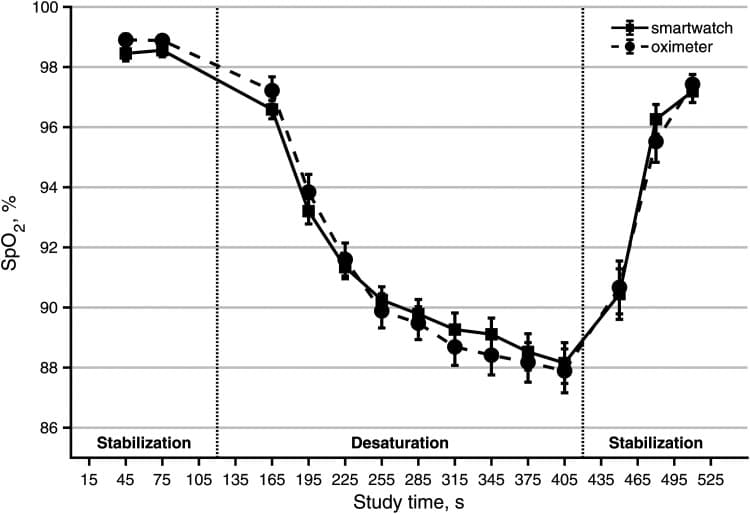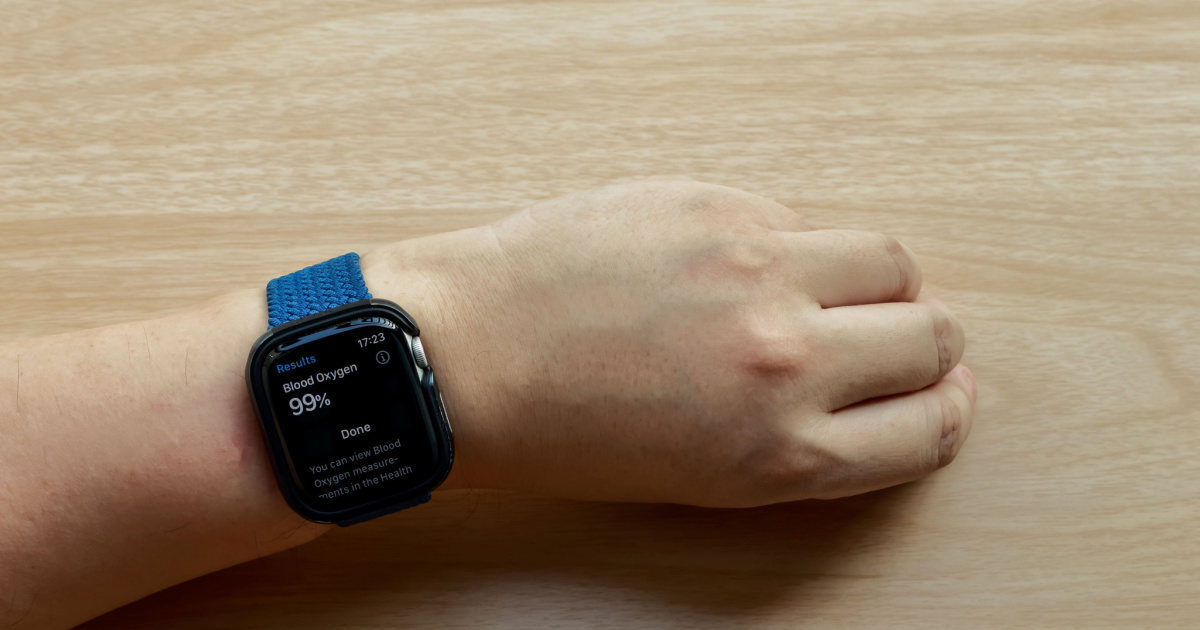When the Apple Watch first gained its blood oxygen sensor, its readings were often inconsistent. The Cupertino-based tech giant is constantly improving its products, though. According to a new validation study, the blood oxygen sensor on Apple Watch Series 6 is about as reliable as a medical-grade pulse oximeter.
Investigating The Ability of Apple Watch to Detect Hypoxemia
The researchers wanted to evaluate how well a commercially available smartwatch could measure blood oxygen saturation levels. The goal was to compare its reliability with medical-grade pulse oximeters. Keeping track of blood oxygen saturation levels can help you with a clue that you might have COVID-19.
Unfortunately, the early days of the blood oxygen sensor didn’t prove too positive. One columnist from The Washington Post noted his Apple Watch Series 6 sometimes claimed his lungs and heart were “the picture of health.” Minutes later, it would read blood oxygen levels so low it might signify emphysema.
Medical researchers from Czech Technical University put the matter to a scientific test. They recruited 24 healthy participants, and took blood oxygen saturation readings from them with both the Apple Watch Series 6 and a Masimo Radical-7 medical-grade pulse oximeter.
Study Demonstrates Apple Watch Blood Oxygen Sensor Reliable Even Compared to Medical-Grade Equipment
For the study, published recently in medical journal Digit Health, the researchers had each participant wear the Apple Watch Series 6 on the left wrist. On the left middle finger, they placed the pulse oximeter sensor. Once decked out with the test equipment, they just had to breathe.
The participants breathed via a breathing circuit with a three-way non-rebreathing valve in three phases. First, in the 2-minute initial stabilization phase, the participants inhaled the ambient air. Then in the 5-minute desaturation phase, the participants breathed the oxygen-reduced gas mixture (12% [oxygen]), which temporarily reduced their blood oxygen saturation. In the final stabilization phase, the participants inhaled the ambient air again until [blood oxygen saturation] returned to normal values.
In 30-second intervals, the team took blood oxygen saturation measurements. All told, the study gathered 642 individual pairs of blood oxygen measurements. They actually found a 0.0% bias between the Apple Watch and the pulse oximeter for all data points.

That’s not to say the readings matched precisely, but the researchers note that differences in individual measurements between the smartwatch and the oximeter can be expected. Ultimately, these researchers are satisfied that Apple Watch Series 6 “is sufficiently advanced for the indicative measurement of [blood oxygen saturation] outside the clinic.”

Good news and I hope we see more health measurements. Blood sugar even if it wasn’t super accurate would be great.
Sources say Apple is working on it, but that feature is still at least 2 years down the road, last I heard.